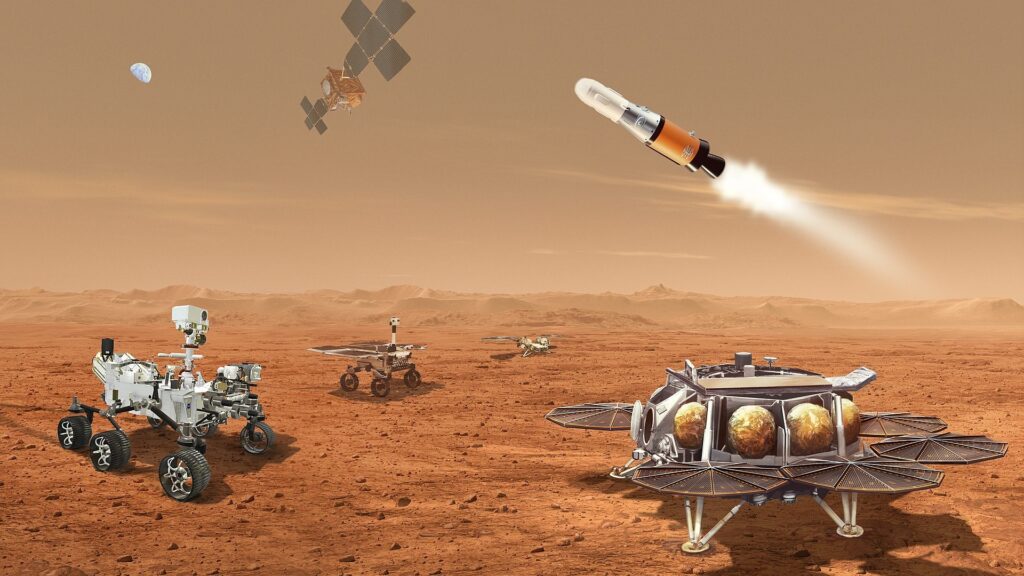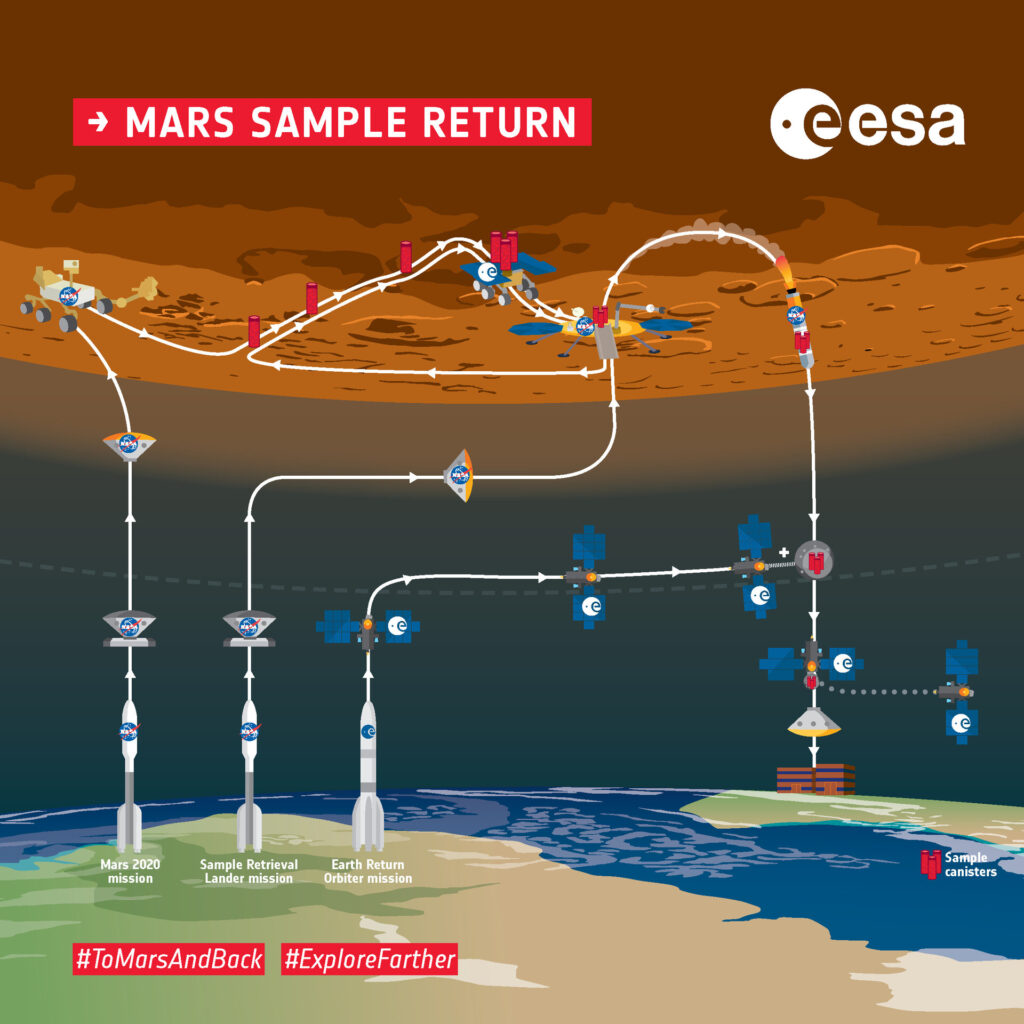Samples collected by the Perseverance rover on the Martian surface are expected to reach the Earth already in 2031. It will be possible, among others, thanks to Poles. Within an international consortium, PIAP Space engineers created a prototype of a rover responsible for collecting and transporting the samples to a spacecraft that will carry them to Earth.
PIAP Space – a company providing robotic solutions for the space sector – operates in an international consortium, together with Airbus (the main contractor of the project) and MDA. Together they are working on the prototype of the Sample Fetch Rover (SFR), which will play a key role in the Mars Sample Return program.

Polish components already at the main integrator
The works on the prototype lasted from 2020 to 2021, during which PIAP Space was responsible for the detailed design, production, introduction of technological improvements and initial tests of the SFR chassis. Canadian company MDA created the software, 3D design and electrical schematics of the locomotion mechanism, and RUAG is responsible for system engineering and supervision of the device validation.
In November 2021, the prototype device created by the Poles was delivered to RUAG’s headquarters in Switzerland, where it is undergoing traction capability testing.
– The delivery of the Sample Fetch Rover chassis prototype is an important milestone in the development of PIAP Space. We hope that the solutions implemented in this device will become the basis for the construction of the final Martian rover, which will be necessary to bring the samples from Mars to Earth”, emphasizes Mateusz Wolski, CEO of PIAP Space.
As PIAP Space experts point out, the company’s previous experience with the design and prototyping of with designing and prototyping robotic arms (TITAN project) and rovers (VELES project), which decided to include the Polish company in the framework of American-European cooperation.
What role will the Sample Fetch Rover play?
Due to limitations related to weight and operation in space, landers and vehicles participating in Mars exploration missions are equipped with only those tools that allow them to fulfill their primary tasks. Autonomous vehicles exploring the Martian surface today, such as Perseverance, have instruments to acquire samples and perform basic analysis. Advanced studies of materials from the Red Planet must be conducted on Earth.
Due to limited possibilities of analysis by rovers, samples collected from Mars surface are stored inside the vehicles themselves to be left in designated points in the future. The task of Sample Fetch Rover will be to reach these points and transfer the samples on board of the space vehicle which will transport them to the Earth for detailed analysis.
Mars Sample Return – About the Program
The Mars Sample Return Program (2020-2030) is a joint venture between NASA and the European Space Agency (ESA), with the primary goal of transporting back to Earth research materials collected during the last years of Mars exploration.
Three rocket launches are planned as part of the program.

The first stage is NASA’s Mars 2020 mission, during which the Perseverance rover, which landed on the Martian crater Jezero in 2021, acquires samples from geologically interesting places. The collected materials will be stored in 43 cylindrical tubes and left on the planet’s surface for later collection.
In the second phase of the program, which will begin in 2026, a rocket with a lander and the Sample Fetch Rover on board will travel to Mars to recover the prepared samples. The rover will perform its task using a robotic arm and place the materials in a Mars Ascent Vehicle (MAV) container. The return journey toward Earth will begin in 2029 with the launch of the MAV into low Mars orbit.
In the final stage of the program, ESA’s Earth Return Orbiter satellite will capture the MAV and transport the samples to Earth’s surface. Built by ESA, the Earth Return Orbiter will launch on an Ariane 6 rocket in October 2026. It will reach Mars in 2027 using ion propulsion, as well as a separate propulsion element to gradually lower its orbit to a proper low Martian orbit by July 2028. The capsule will return to Earth in 2031 during the Mars-to-Earth transfer window.
About PIAP Space
PIAP Space is a spin-off company founded in 2016 by Łukasiewicz Research Network – Industrial Institute for Automation and Measurements, specialized in providing robotic solutions for the space sector. It develops technologies and products in the field of satellite integration and test equipment (MSGE), active space debris removal, manipulators and grippers, on-orbit satellite handling, human-robot interaction, and vision systems and mechanisms. Since its inception, PIAP Space has executed contracts for the European Space Agency related to space monitoring and exploration today and in the future, including the design of a robotic arm for servicing TITAN satellites and the development of the VELES autonomous robot for the PRO-ACT project.

The mission is carried out and funded under a programme of the European Space Agency. The views expressed in this document should in no way be taken to reflect the official opinion of the European Space Agency.

